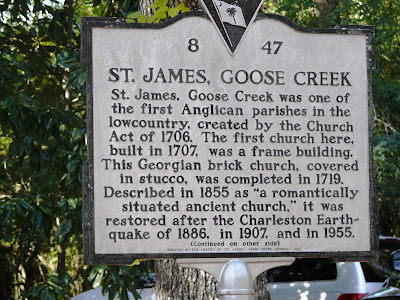You have to realize that this was three generations before the Revolution. The coat of arms of King George with the unicorn and the lion still adorns a piece of prime real estate above the altar. The story goes that when the British were ravishing the countryside and searching for Francis Marion, that coat of arms saved the church from their wrath.
In the early eighteenth century the low country, centered on Charleston, was home to the wealthiest citizens of North America. Goose Creek was the site of wealthy plantations not only because it was in the middle of those suitable croplands, but also because it was a transportation crossroads. Some American colonists were people looking for a place to practice their religion without interference or even persecution. Others were missionaries. The folks who set up shop in this area, however, were not nearly so altruistic. The leaders came for money and power. Cotton, rice and indigo generated huge profits. The industry was labor-intensive, but that was not a problem; the plantation owners would just purchase more boatloads of slaves happily provided by Arab (and other) slave traders. The culture evolved into a bi-modal one with a few living hypocritical lives of aristocratic elegance while many lived lives that were impoverished, brutal, and short. That culture evolved and spread throughout the south, and its residue is easily visible even today. A "southern living" society embodies a genteel and gracious approach, but the blonde's ugly roots are still evident.











